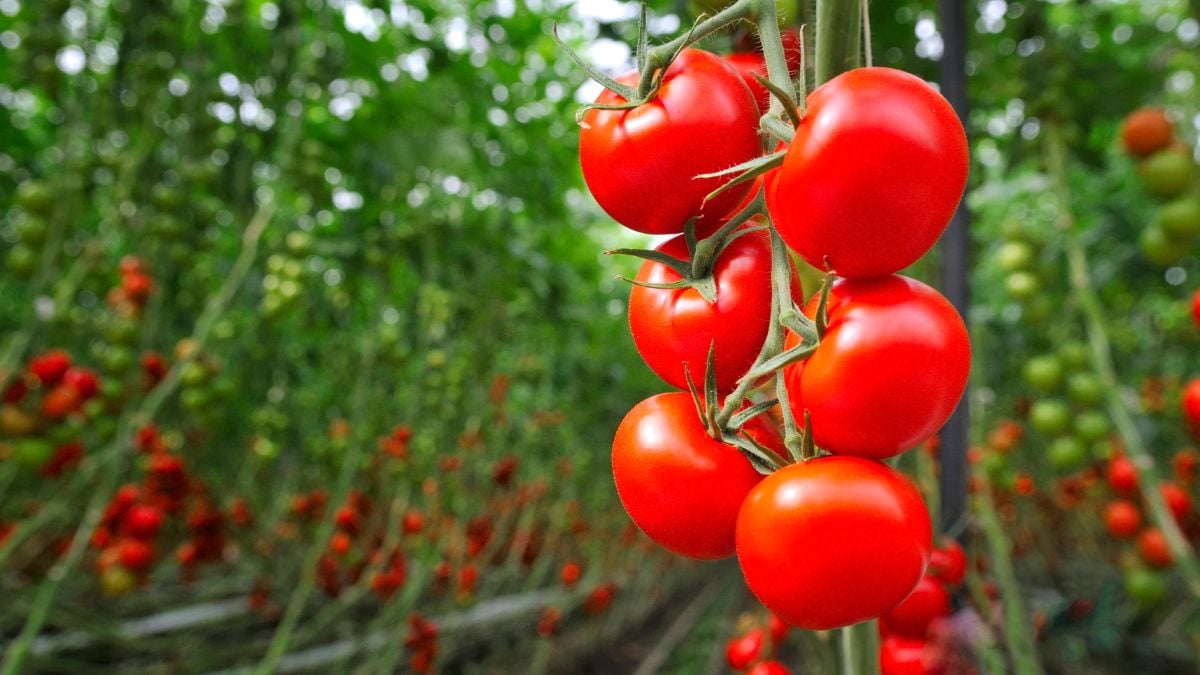
The Donald Trump administration once again shook the trade relationship between Mexico and the United States by announcing, through the Department of Commerce, that it will impose a 20.91% tariffs on most fresh tomatoes imported from Mexico, starting July 14, 2025. The decision is accompanied by the official withdrawal from the Suspension Agreement of the Antidumping Investigation on Fresh Tomatoes from Mexico, in place since 2019.
The reason behind this measure, as explained by Secretary of Agriculture and Rural Development, Julio Berdegué Sacristán, is unrelated to other reciprocal tariffs that both countries have announced recently. It is a sanction motivated by “alleged cheating” in the pricing of Mexican tomato exports. “This is something that comes from decades ago,” the official clarified.
ALSO READ. Coca Cola responded to the Mexican boycott with this little gift
What is the Suspension Agreement and why is the United States withdrawing now?
Since 1996, Mexican tomato exports to the United States have been regulated by the Suspension Agreement, a mechanism that put an end to an investigation for alleged dumping — the practice of selling products below their actual cost to gain market share.
This agreement has been renewed five times, most recently in 2019, when Donald Trump’s first administration temporarily suspended the treaty, until Mexican producers agreed to a minimum price per pound of tomatoes, in addition to enhanced inspections.
However, Florida tomato producers have long claimed that Mexican farmers continue to engage in unfair practices. “They say, ‘he’s not really selling the tomato at the real price he should sell it. He’s offering it below the real price to take over the market.’ (…) That’s what’s called, in simple words, cheating,” explained Berdegué. “In our view, it has never been proven, nor can it be.”
ALSO READ. Why was William Levy arrested? What we know
How will this measure affect the U.S. market?
The consequences will not be exclusive to Mexico. The U.S. market itself will also be affected, primarily in the final price paid by consumers. Julio Berdegué was clear: “Their tomatoes are going to be more expensive. Their salads will cost more. They can’t replace us, because there aren’t a bunch of other countries producing this quantity of excellent tomatoes at such a convenient price. If they don’t want to buy from us, they’ll simply pay 21% more.”
According to official figures, 90% of the tomatoes the U.S. imports come from Mexico, and 6 out of 10 tomatoes consumed in the U.S. are grown in Mexico. Raising the price by over 20% will directly impact the cost of living for millions of families and restaurants.
How much tomato does Mexico export to the United States?
In 2024, Mexico exported 1.88 million metric tons of tomatoes, valued at $3.339 billion USD, according to the Agricultural Markets Consulting Group (GCMA). Of that total, 98% was destined for the U.S. market.
For 2025, exports are projected to reach 1.91 million tons, although this estimate could change drastically if the new tariff is implemented.
Tomatoes hold a strategic position in Mexico’s agricultural economy: it is the country’s third most important agro-export product, behind beer and avocado. Its value chain generates over 400,000 direct and indirect jobs in Mexico, according to official data.
What is the position of the Mexican government?
President Claudia Sheinbaum has stated that she will seek diplomatic dialogue to resolve the conflict, while stressing that dumping investigations are neither new nor unique to this sector. The Secretary of Agriculture reminded that Mexico also has active antidumping investigations against products such as U.S. chicken.
“These measures, these antidumping investigations, are common. Not new, not from yesterday, they’ve been going on for a long time,” Berdegué reiterated.
What economic impact could the tomato tariff have on Mexico?
The impact will be threefold:
- For Mexican producers, it will mean a potential loss of competitiveness against other producing countries, although it’s important to note that there are no immediate alternatives to Mexican production in terms of volume and quality, which remains a relative advantage.
- For the Mexican economy, it represents a direct threat to a key income source: in 2024, tomatoes were the fifth most valuable agro-food export, only behind beef, avocado, tequila, and beer.
- For U.S. consumers and distributors, the price hike could impact both households and food businesses, especially in states where tomatoes are a dietary staple.
Can Mexico reverse this decision?
Donald Trump’s return to the presidency has reactivated a protectionist trade agenda that was seen during his first term. Since his return to the White House in January 2025, both Mexico and Canada have been targeted with new customs tariffs, many of them justified on migration or border security concerns, such as the trafficking of fentanyl.
This new tomato tariff adds to a series of previous levies, including 25% on steel, aluminum, automobiles, and products that don’t meet USMCA origin rules.
The announcement by the Department of Commerce, led by Howard Lutnick, maintains that the 2019 agreement “has failed to protect U.S. producers”, and therefore, tariffs are seen as necessary to restore market fairness.
Although the formal process is moving toward implementing the tariff on July 14, there are still open windows. The Mexican government has 90 days to negotiate, apply diplomatic pressure, or even challenge the measure before the World Trade Organization (WTO).
However, the chances of reversing the decision diminish if the U.S. government insists that Mexican tomatoes are competing “unfairly”.










